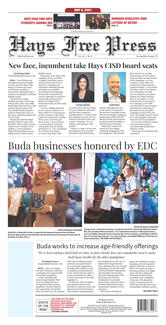This Week in Texas History
by BARTEE HAILE
Retired revolutionary Pancho Villa took his last ride on July 20, 1923 not astride his favorite horse Seven Leagues but behind the wheel of a 1919 Dodge touring car.
Among the hardened outcasts from the wilds of northern Mexico that answered Francisco Madero’s stirring call to arms was bandit chieftain Doroteo Arango, alias Pancho Villa. The illiterate half-breed did not know the first thing about formal military tactics, but he had a merciless knack for striking terror in the hearts of the rich and privileged.
By the spring of 1911, with the soldiers of dictator Porfirio Diaz bottled up in their barracks, Villa controlled the state of Chihuahua. Elsewhere, however, the rebellion progressed at a far slower pace causing Madero to turn thumbs down on the daring idea of a surprise attack on Ciudad Juarez.
Displaying his usual disregard for the chain of command, Villa seized the sister city of El Paso with surprising ease. On the other side of the Rio Grande, Texans by the thousands observed from their rooftops the brief but bloody battle. The next morning, they watched in horror as Villa personally executed high-ranking captives.
The fall of Juarez doomed the 27-year reign of strongman Diaz, who soon fled the scene. But his long overdue departure did not bring down the curtain on the Mexican Revolution, which eventually claimed two million lives and encouraged more than 250,000 Mexicans to immigrate to Texas.
A Pollyanna dreamer rather than a two-fisted ruler, Madero had hardly assumed power before cynical generals began to plot his overthrow. As his reward for loyally standing by the endangered hero, Villa was thrown in prison by the muddleheaded Madero.
Failing to see the benefits of incarceration, Villa literally walked away in early 1913 and did not stop until safely registered in an El Paso hotel. In his absence, Madero was murdered by Victoriano Huerta, who immediately filled the presidential vacancy.
Like an avenging angel of death, Villa returned and organized a huge private army based upon the strength of his personality rather than politics. As unpredictable as he was independent, the towns of the strife-torn north never knew whether to expect courtesy or carnage from the volatile rebel. Sometimes Villa and his men were perfect gentlemen, while on other occasions they reverted back to their bandit roots raping and plundering at will.
Since the Juarez victory, the U.S. press had portrayed Villa as a swashbuckling Robin Hood. In keeping with this uncritical coverage, American reporters deliberately overlooked the many atrocities committed by the villistas.
Even Woodrow Wilson, impressed by the fact that Villa did not bad-mouth the United States, was swayed by the slanted stories. The president picked Pancho as the leader best qualified to calm the troubled waters of the stricken neighbor.
With the fall of Huerta in 1914, the revolution entered a third blood-soaked phase. Neither Villa in the north nor peasant champion Zapata to the south had a program to restore order and pull the country together. When Venustiano Carranza boldly seized power, a savage civil war ensued.
Deciding in the fall of 1915 that Carranza clearly had the upper hand, Wilson extended full recognition and complete support. Incensed by what he interpreted as a backstabbing betrayal, Villa went on a rampage. Failing to get a rise out of the patient president, he crossed the border in an unprecedented raid on Columbus, New Mexico.
That was, of course, the last straw and provoked military intervention by the U.S. For months Gen. “Black Jack” Pershing searched high and low for Villa but withdrew empty-handed in January 1917.
Villa’s force of 50,000 steadily dwindled down to 600 before his negotiated surrender in 1920. In exchange for tossing in the towel, he was granted amnesty and given a hacienda.
Surrounded by his personal staff and admiring hangers-on, Villa was more than happy to let bygones be bygones. But a fanatic handful of upper-class enemies would not be denied their revenge.
For three long months, the eight conspirators hid in a house in the town of Parral, where the retired rebel owned a hotel. Confident Villa would show his face sooner or later, they bided their time and cleaned their guns.
On a hot summer day in 1923, Villa finally appeared with five companions. Finishing their business at the hotel, Pancho and his pals piled into the shiny Dodge and headed for the hacienda.
The first shot shattered the windshield striking Villa squarely in the chest. As the automobile careened out of control and crashed into a tree, the assassins ran into the street with guns blazing.
Seconds later the shooting stopped. Sixteen bullets had done the job. Lying lifeless in the front seat was the invincible Pancho Villa.
Do you have your copy of “Tornadoes, Hurricanes & Other Disasters,” the latest “Best of This Week in Texas History” column collection? Order today at twith.com or mail a check for $14.20 to Bartee Haile, P.O. Box 152, Friendswood, TX 77549.




